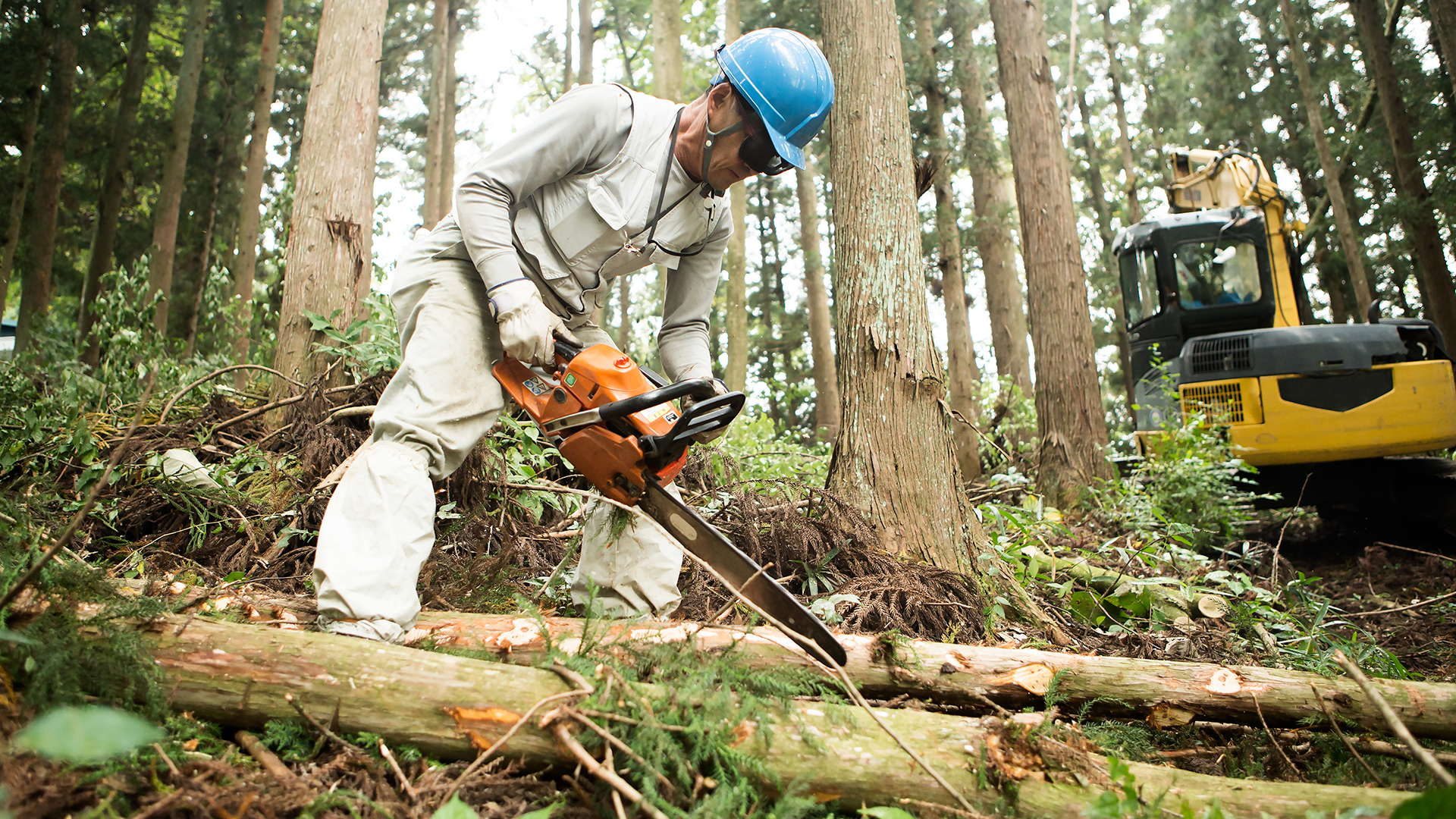How to cut with a chainsaw
A beginner’s guide to how to cut with a chainsaw

New to using a chainsaw? It can be daunting if it’s your first time. That’s why we’ve pulled together this beginner’s guide on how to cut with a chainsaw.
Chainsaws help you blitz through your home and gardening projects, whether you’re cutting firewood or trimming small trees. You’ll want to polish your technique to boost your confidence when tackling jobs.
It’s crucial to take proper safety precautions. We’ll explain what measures you can put in place to protect yourself and others, giving you peace of mind.
Here, we’ve asked an expert for their top tips on how to cut with a chainsaw. Worried about kickback? You’ll learn how to handle your chainsaw to reduce the risk.
Ready to get started and purchase your first chainsaw? Our guide walks you through the factors to consider to pick the right model for you.
How to cut with a chainsaw

Melody Estes is a Landscape Design Gardening Supervisor from Maine and a consultant for The Project Girl, where she offers her expertise on taking care of your yard.
If you’re starting out, it’s vital to learn how to cut with a chainsaw safely and effectively. Here’s how.
1. Safety first
Sign up to receive the latest news, reviews, buying guides and deals direct to your inbox
“Cutting with a chainsaw for beginners can be scary, especially if you're not used to it. But don't worry! We've got you covered,” says Melody Estes, a Landscape Gardening Supervisor and a consultant at The Project Girl.
“Always wear protective gear. Goggles and hearing protection (earmuffs) are essential. You should also wear long sleeves and pants to protect your arms and legs from flying debris,” she advises.
2. Nail your cutting technique
Hold your chainsaw firmly with the front handle in your left hand and the rear in the right. Wrap your fingers around the handles to hold the device steady and improve your control. Stand slightly to one side with your feet hip-width apart for stability.
Aim to slowly lower the bottom of the blade onto the wood. Resist the temptation to exert too much pressure - let the chainsaw do the work for you.
3. Avoid kickback
Kickback is when you lose control of your chainsaw, and it moves back with force. Thankfully, you can take steps to minimize the chances of it happening and protect yourself.
“Make sure that your saw is set up properly. This means that the blade should be sharp, and the chain should be free of obstructions,” explains Melody.
Cutting with the tip of your chainsaw is a no-no. You’re more at risk of kickback when you cut with the end. Pay attention to where the tip is positioned at all times to stay in control.
Discover more guides for the garden…
Cheap chainsaw deals
Best leaf blowers
Best pressure washers
Cheap pressure washer deals
Best patio heaters
Best inflatable hot tubs
Louise Bond is a UK-based writer and the founder of The Cove Copy. She has been published in The Guardian, Breathe, Fit & Well, Top Ten Reviews, and more. When she’s not writing, you can usually find her out in nature, whether hiking in the woods or pottering in the garden.
- Melody EstesLandscape Gardening Supervisor

